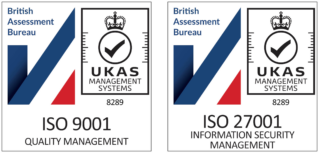Home Office responds to report on illegal working

I was interested to read the Home Office response to the latest inspection report by David Bolt, the Independent Chief Inspector of Borders and Immigration, which looked at the Home Office’s approach to illegal working, including:
the assessment of the illegal working threat
the operational response, including the performance of Immigration Compliance and Enforcement (ICE) teams
the collection, analysis and use of intelligence
collaboration between Immigration Enforcement (IE) external partners and stakeholders
the identification and safeguarding of potential victims of modern slavery and of other forms of exploitation
the use of Civil Penalties and Closure Notices against non-compliant employers
In their response to the report, the Home Office accepts the six key recommendations made, the majority of which focus on improving the mechanics of illegal working compliance and enforcement. Whilst it’s suggested that some of the recommendations may take some time to implement, there were a few things that stood out to me:
‘A broader range of sectors’
The Chief Inspector recommended that the focus by Immigration Compliance and Enforcement (ICE) teams should be broadened to include more employment sectors, with care, construction and infrastructure projects all mentioned in the report. His findings showed that ICE teams were historically heavily reliant on allegations made by members of the public, with almost half of all illegal working deployments in Q4 2018 made at restaurants and fast food outlets and concentrated on a few nationalities.
In response, the Home Office says that public allegations remain important, but they are already looking to diversify their work “into a broader range of sectors”.
In my view, this should be an early warning to businesses of all sizes across many industries that Immigration Enforcement will be extending the reach of their visits; they should take the time to ensure that they’re well prepared, with a clear process for Right to Work checks and proof of the checks documented and easily auditable.

No change to penalties
There are no suggested changes to Right to Work penalties, with the Home Office continuing to enforce fines up to £20,000. In their response to this report, the Home Office stated that it
“does not accept that employers who employ illegal workers should be completely absolved of liability for penalties if they co-operate with the authorities, as this too could drive perverse behaviour in terms of discouraging employers from conducting proper checks”
Again, this reinforces the need for a business to be able to clearly demonstrate their compliance and ensure they have a statutory excuse.
Intelligence and data sharing
The report also recommended that teams involved in immigration enforcement work in an ‘intelligence-led’
way, encouraging joint working initiatives, intelligence gathering and data
sharing.
At TrustID, we put great emphasis on capturing and analysing intelligence from the identity documents which our customers are checking – to spot trends in industries or with particular fraudulent document types, for example. We use this intelligence to constantly improve our ability to identify suspicious documents and protect businesses from employing illegal workers and to share trend information with wider bodies, including the Home Office and the police database of known fraudulent and stolen identity documents.
I’m also Chair of the Association of Document Validation Professionals (ADVP), and again, intelligence sharing is key for this industry body: we’re working hard
to build ever-closer links with the Home Office and law enforcement bodies to
share intelligence and key findings from our experience with identity document
validation and fraudulent identity document trends.
If you’d like to read the whole response, you can find it here
Want to find out more?
Our range of identity validation solutions could help you introduce a simple validation process and demonstrate compliance
Sign up to receive updates
Receive notifications from TrustID direct to your inbox. Simply fill out your email address in the form below.
Want to find out more?
We’d be really happy to chat through your requirements and offer advice on the best service for your business.
Tel: 0118 466 0822 or email us.
Request a callback


